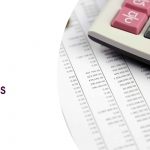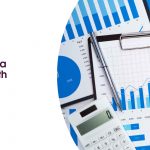How To Predict Your Next Money Move
What if your business could be five steps ahead of the competition at all times?
Fortunately, that is now possible – all thanks to predictive analytics.
Predictive analytics refers to the ability to discover patterns in data and communicate improved business performance through good decision-making. Here, focus is not kept on historical information or outdated statistics. Predictive analytics finds most of its scope in the present – that includes identifying trends, analysing every possible “what-if” scenario, and more.
Needless to say, such predictive analytics can truly help you make efficient business decisions – one that will help you generate profit. Here is how:
Increase Productivity
Modern predictive analytics uses both cloud and analytic technology to monitor product conditions. In case certain conditions match failures, the analytics use that data to predict cases of future failures. This way you’ll catch the kink in the system instantly, before it spells disaster for your products.
Predictive analytics also looks at past purchasing trends to schedule the most appropriate times for maintenance and routine checks. That way, you’ll improve product quality without using excessive resources. Simultaneously, risk management is controlled, and manufacturing productivity also improves.
Employee productivity is often overlooked when you already have a lot in your hands. Luckily, predictive analytics models can apply specific algorithms in their systems, that can analyse your employee performance in the past and present, and use it to predict their productivity in the future.
This kind of machine learning technology can be further mechanised by setting an algorithm that displays results as a visual trend. A “trend line” showing the path of productivity curve for the future will help managers notice upcoming problems and opportunities easily.
Improve Customer Service
Modern predictive analytics need not be too complicated – one of the simplest, most efficient is the Cluster Model, where customer segmentation is given attention; after customer profiles are made, algorithms can segment “clusters” based on target groups – examples include product-based clusters, behavioural clusters, brand-based clusters etc.
Other simple models include the Propensity Model, where “true” predictions are made about customer behaviour; such models channel information and predictions like likelihood of conversion, propensity to unsubscribe, propensity to buy etc.
The Collaborative Model lets you make new recommendations to your customers based on their behavioural patterns like past purchases, brand-based purchases and the like. Such models like up-sell, cross-sell and next-sell are a bit complex, but fruitful when it comes to adding a touch of personalization to your business – customers consider it heartfelt when they’re given recommendations that cater to their specific needs.
Such models create an air of positivity, and customers can feel it; they realise that their likes, dislikes and necessities are being catered to – and immediately feel an affinity for your company. You’ll gain customer attraction, and profits.
Improve Marketing Strategies
With improved customer attraction, comes the chance to improve your marketing strategies. Marketers want to be able to “decode” their customers’ minds: learn what they have bought in the past, and predict what they will buy next.
Predictive analytics helps out because it readily provides real-time data. Once all this data is mined, marketers are given the sharpest tools to dig deep into the customers’ minds and hearts.
Their first instinct must always be the same: target best-selling products to customers most likely to buy them. Predictive analytics – like what Oscar has – offers accurate data on your best-selling products in the past, and the future. Furthermore, this POS software also lets you create customer insights based on their purchasing behaviours. With both data hand-in-hand, marketers know exactly what to sell and to whom.
Good pre-planning decides a good marketing strategy – so marketers can begin by creating “what-if” scenarios about customers; this way, your business can set a priority product list, based on what predictive analytics show.
The future of predictive analytics is hardly undulating; marketers, for example, may have to face criticism when it comes to the fine line between targeted marketing and invasion of privacy. However, it has as much pros as cons, if not more; after all, predictive analytics help pave a safe yet profitable path for any type of business, helping you work on your future money moves without leaving the present.








